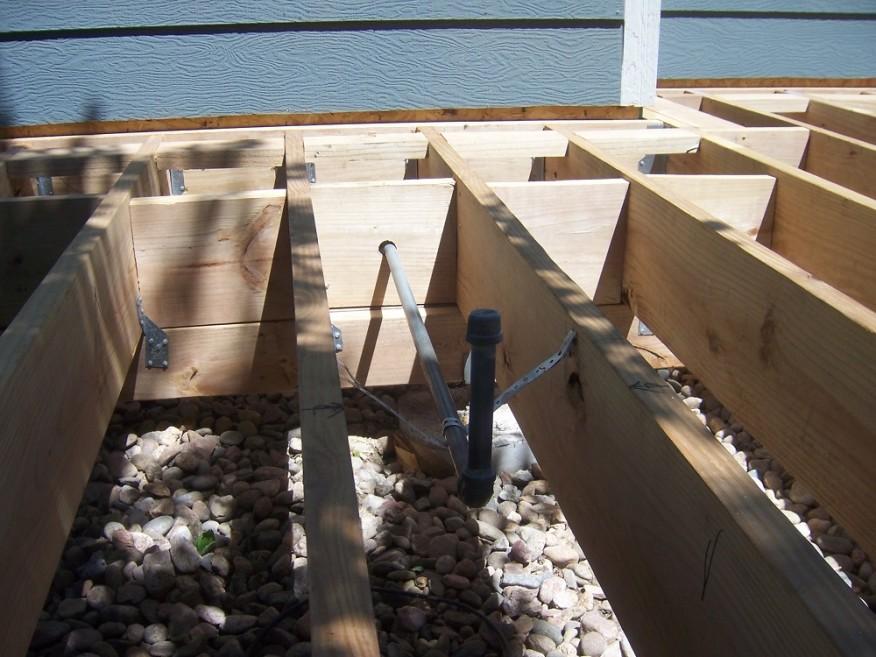Barbecue grills shoved into a corner of the deck have evolved into full-blown outdoor kitchens. As a “code guy,” I should point out that the International Residential Code (IRC) has a few things to say about kitchens, and it doesn’t care if the kitchen is inside or outside the house.
Cooking with gas

Other than following all of the manufacturer’s installation instructions and using only tested and listed appliances, there are no specific code requirements for built-in or freestanding BBQ grills. That said, be sure to observe minimum clearances when designing the space, to minimize the risk of fire. Look for eaves extending beyond sidewalls and possibly over the grill, and be careful when designing a porch roof over a grill area. An exhaust hood can be expensive, but it is effective at managing smoke when the grill is under a roof or near a window and may prevent smoke from entering the home and triggering the alarm system.
You are watching: Code requirements for outdoor kitchens
Building codes definitely apply when a gas distribution system from the home is extended to permanently serve the outdoor grill. Regardless of licensure requirements, which vary from state to state, only trained and professional plumbers or mechanical contractors should install gas lines; however, there are a few things you as the designer should understand and consider. First, make sure the construction schedule allows for painting the common black iron gas pipe for protection from corrosion.
Read more : How to Lay Outdoor Tiles – Step By Step
The plumber also needs to be guided on how far to stub the line up from beneath the deck, and that means knowing the thickness of the decking. In order to tighten the threaded fittings on gas pipe, a pipe wrench needs sufficient unthreaded pipe to clutch. The IRC requires that the gas pipe extend through the floor enough to expose a minimum of 2 inches of unthreaded pipe. Simple to do, but simple to overlook. Also, the pipe stub cannot be located behind a door, where it would be subject to physical damage should the door repetitively be opened into the pipe.
Electrical convenience
While the IRC requires that all kitchens be provided with two 20-amp circuits dedicated to receptacle outlets, I have never heard of an inspector requiring this on an outdoor kitchen. The requirement for these receptacle circuits is to minimize the need for extension cords or receptacle splitters to serve toasters, blenders, and other small appliances commonly used in a kitchen. For the optional (and often seasonal) outdoor kitchen, these appliances—and the outlets needed to supply power to them—are not commonplace. Of course, if you choose to include receptacles in your design, installation would need to follow standard requirements.
While the IRC requires that all kitchens be provided with two 20-amp circuits dedicated to receptacle outlets, I have never heard of an inspector requiring this on an outdoor kitchen. The requirement for these receptacle circuits is to minimize the need for extension cords or receptacle splitters to serve toasters, blenders, and other small appliances commonly used in a kitchen. For the optional (and often seasonal) outdoor kitchen, these appliances—and the outlets needed to supply power to them—are not commonplace. Of course, if you choose to include receptacles in your design, installation would need to follow standard requirements.
Water
The installation of an outdoor sink is not commonplace, so discussion with the local building department during the planning phase is critical. Many details regarding the freshwater supply and drain for waste will be dependent on locally established rules and the climate, and not the IRC.
Read more : Stoneware and Porcelain Paving Over Sand
In freeze-prone areas, water can be supplied by a seasonal service similar to a landscape sprinkler system, with a stop and waste valve installed in the conditioned portion of the house that can be shut off and the outdoor piping drained when the weather turns cold. For year-round water service, the sink will need to be placed against the exterior wall of the house and supplied with a hot-cold frost-protected hose bibb. Of course, adding a sink to retain water introduces the need for a drain.
In some areas, code might not specifically prohibit simply draining the sink to the yard, but it may still raise a red flag with the inspector. No one cares if you wash your hands in your sink, and it drains to your yard, but what about washing the cutting board after prepping chicken shish kabobs out on the deck? To avoid this problem, a drain can be permanently connected to the home’s DWV (drain, waste, and vent) system, which requires the use of a P-trap to separate the occupant using the sink from the sewer system below the ground. But a P-trap can freeze, and while there are a number of ways to address this issue, the building department could question all of them.
Outdoor kitchen design and features can vary considerably and thus so do the IRC requirements regarding their installation. Keeping in mind the environmental differences between an outdoor kitchen and an indoor kitchen and considering the IRC can’t protect us from every possible hazard, just the probable, will help you get off on the right step in your design. However, many features of an outdoor kitchen could be uncommon to your building department, so always consult with it first.
This article originally appeared in the Sept. 10, 2018, issue of Deck Builder Magazine and is reprinted with permission.
Source: https://gardencourte.com
Categories: Outdoor


